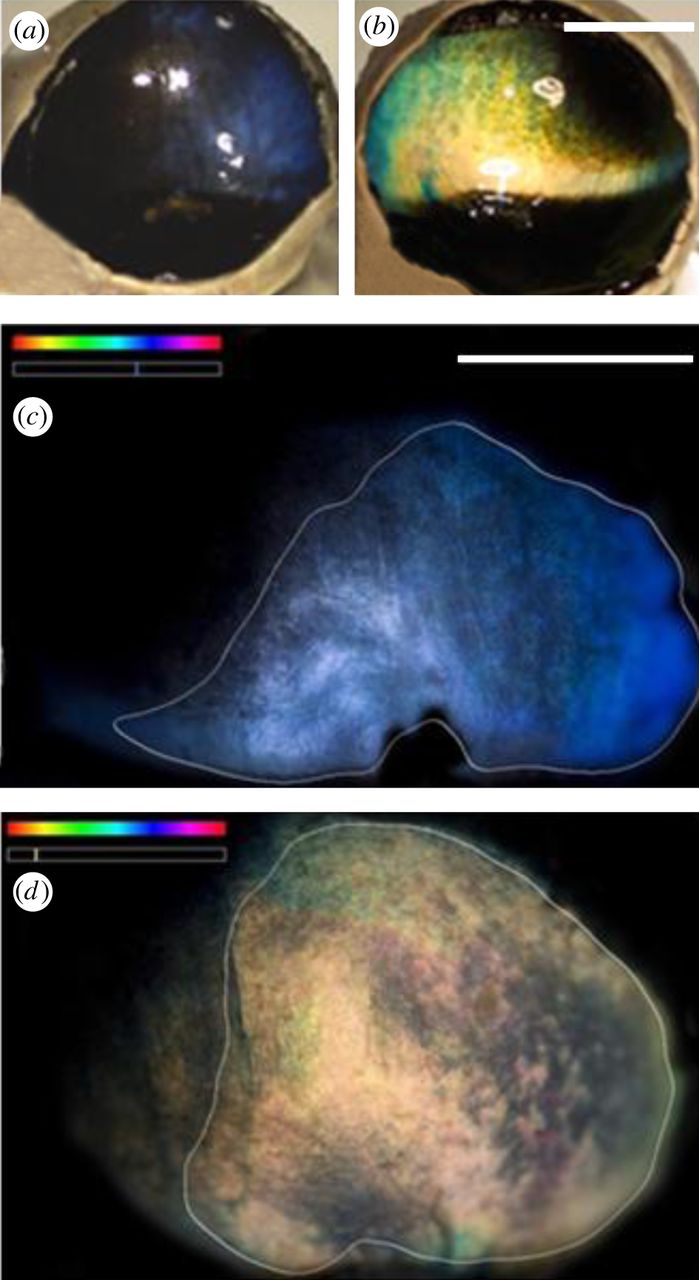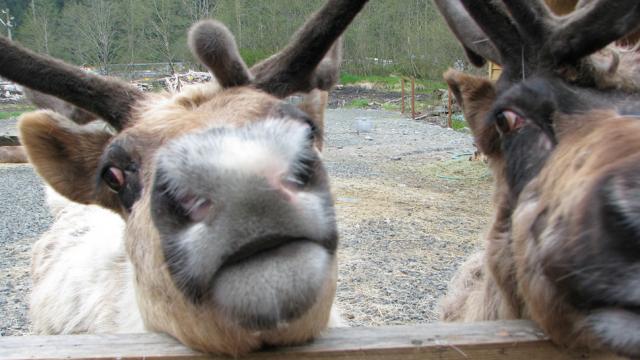Dogs and cats are adorable creatures by day, but under the cover of night their eyes seem to shine like demon spawn. That’s the work of the light-reflecting tapetum lucidum, a layer of tissue that sits right behind the retina. As it turns out, that same tapetum lucidum just might be responsible for turning reindeer eyes from gold-hued in the summer to blue-tinted in the winter. Neat!
Popular Science points us to a study published in the Proceedings of the Royal Society B journal, which outlines the biological response the arctic animal goes through during the extreme change of seasons in the harsh environment up north.

TL in (a) winter and (b) summer eyes following removal of the cornea, lens and vitreous.
When it’s consistently bright outside, lots of light is reflected through the retina, resulting in the gold colouring . Once the weather gets grim, reindeer pupils are constantly dilated; this also blocks ocular drainage, resulting in collagen compression, which in turn impacts both the amount of light that’s captured, and the wavelengths of reflection from within — thus, the deep blue hue. The clarity of their vision may be reduced when it’s dark all the time, but at least they have some ability to make their way around under the soft glow of the moon. [Popular Science]
Photo of Alaskan Reindeer via Flickr user Alana Sise
